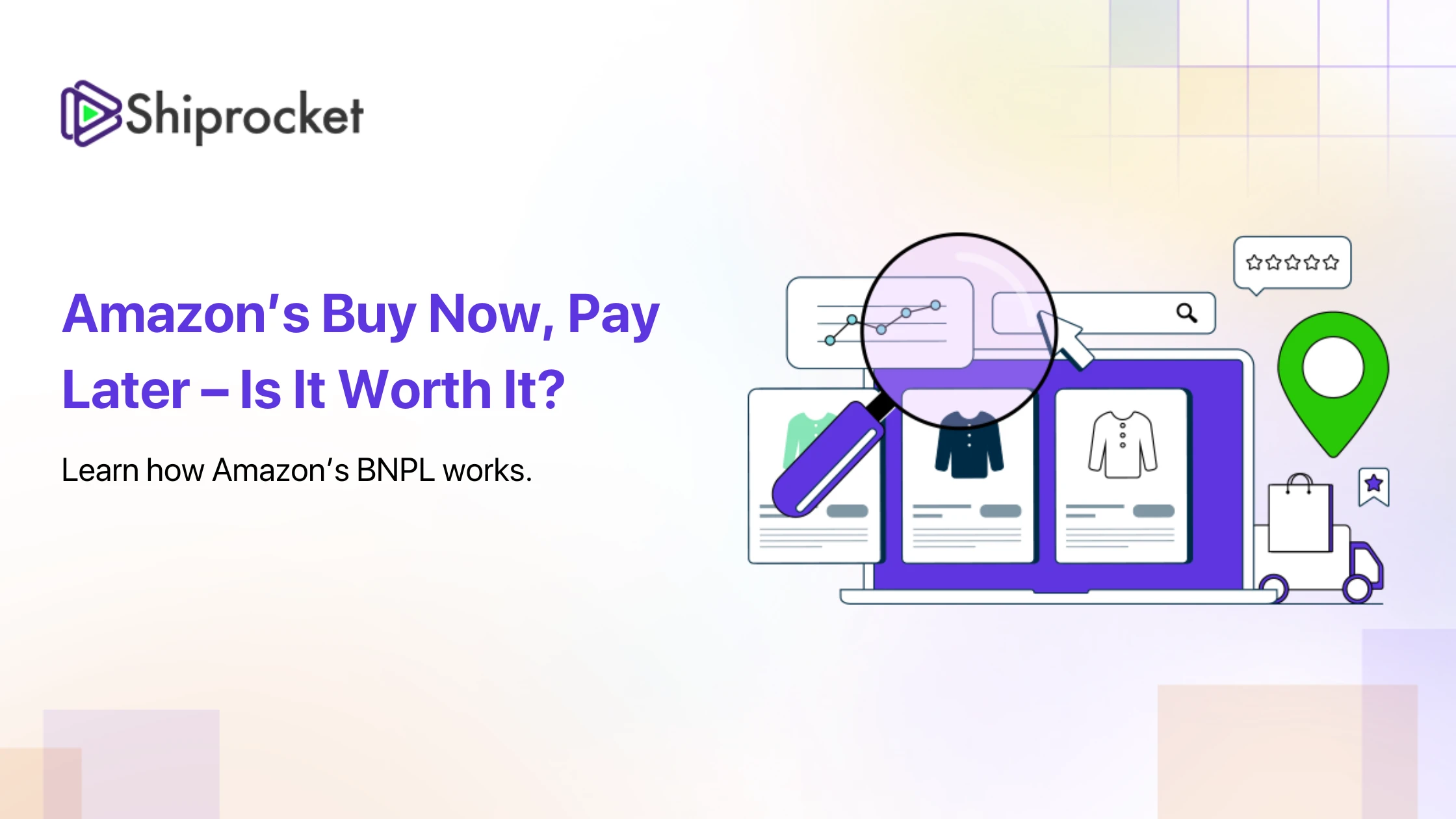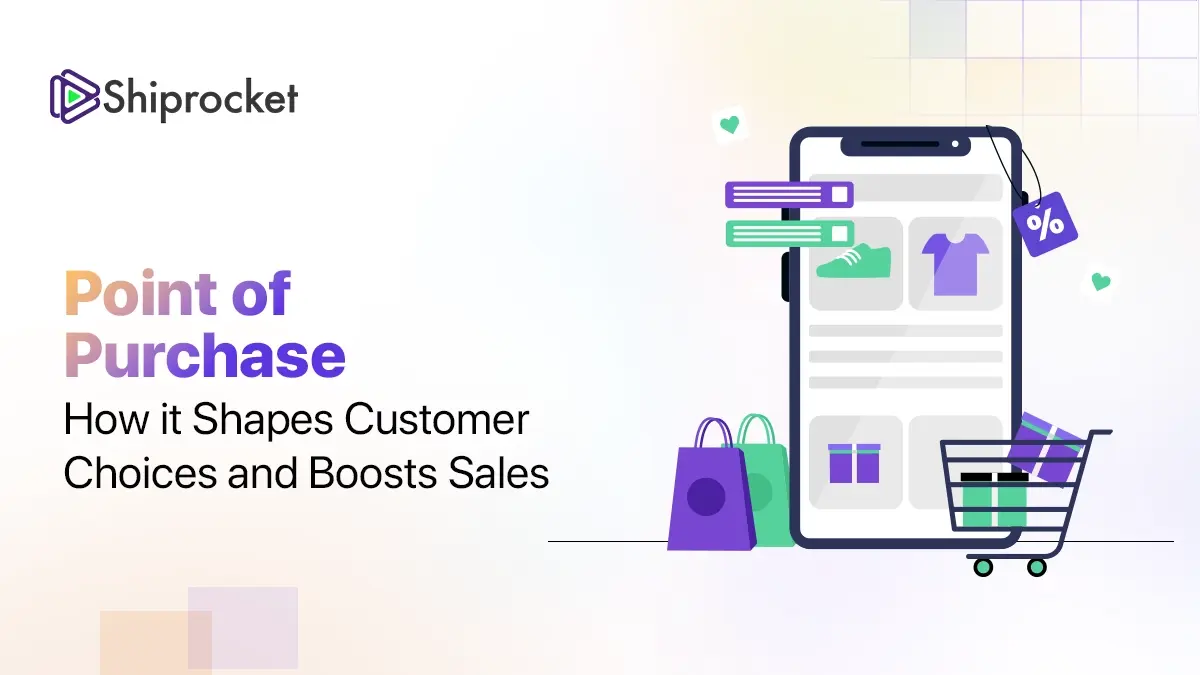Minimising RTO: A Seller’s Guide to Reducing Returns & Boosting Delivery
- What is RTO (Return to Origin)?
- How does RTO Affect Sellers?
- Common Causes of High RTO Rates for Sellers
- Effective Strategies for Reducing RTO
- Here are some effective tips to lower the RTO:
- Using Technology to Minimise RTO
- How will Shiprocket Engage 360 Help in Reducing RTO?
- Partnering with Reliable Logistics Providers
- Conclusion
RTO, short for Return to Origin, is a term sellers often dread. It impacts the profitability of a business and its efficiency. As a seller, you may be aware of the financial repercussions of RTO and the hassle associated with the same. The rate of return is quite high among Indian eCommerce sellers. Statistics reveal that 20-25% of their purchases end up in return.
Did you know that you can reduce its rate by following a few simple tips? This article discusses the same. Discover the key causes, consequences, ways to reduce RTO, and more.
What is RTO (Return to Origin)?
The products not delivered to a customer and returned to the seller fall under the “Return to Origin” category. There can be many reasons behind unsuccessful deliveries, including:
- The customer is not available at the given delivery address.
- The incorrect address is mentioned on the package.
- The customer denied the order at the doorstep.
- Premise closed (in case of offices/ shops).
- Fraudulent orders.
In such cases, the delivery agent returns the package which is shipped back to the seller.
How does RTO Affect Sellers?
RTO has a substantial impact on businesses. Increasing the number of returns adds to the logistics cost, and the business also has to bear the hassle involved in the process. Here is a closer look at the additional cost a business incurs due to RTO:
- Blocked Inventory – When a customer places an order, that particular item is blocked as it is officially booked by them. In an ideal scenario, it is delivered safely, and the seller earns a profit. However, in the case of RTO, the items get blocked or stuck until they come back to the inventory. No one else can order them until the booked product/item comes back safely to the warehouse.
- Operational Expense – When an order is placed, a business must bear several expenses to ensure it is delivered efficiently to the consumer. Some of these expenses are the cost of packaging, labour, and quality checks.
- Reverse Logistics Cost – When shipping a package to your customer, you bear the forward logistics cost. If the package is returned, you also incur the reverse logistics cost, which adds to your expenses.
- Repackaging Cost – When an RTO product is ordered again, you’ll have to go through the entire order processing process again. This includes packaging the items, doing quality checks, coordinating with the logistics partner, and more. This adds to the overall cost and also requires time investment.
- Possibility of Damage – The possibility of damage to a returned good is higher as it moves to and fro multiple times and stays in the warehouse for a longer time.
Common Causes of High RTO Rates for Sellers
If you are experiencing high RTO rates, then it may be time to identify the root cause of the issue. By identifying the reason for return, you can devise a strategy to reduce its rate. Here are some of its common causes:
Incorrect Address
The delivery address and other related details mentioned by the customer are shared with the logistics company. In many cases, customers enter incorrect addresses thereby resulting in RTO. The address mentioned by a customer is considered incorrect in the following cases:
- If the customer provides unnecessary details along with the address, it may confuse and lead to RTOs. For instance, many customers tend to mention different addresses for delivery on weekdays and weekends in the same address field.
- At times, the address contains information which is difficult to interpret. They may provide unnecessary instructions to find the location rather than giving a proper landmark.
- Spelling mistakes are also a common reason for RTO. Delivery agents often end up at the wrong address because of spelling mistakes. In many cases, they do not find any such addresses at all.
- Delivery agents also encounter cases where essential address details such as pin codes, street numbers or house numbers are missing. This makes it hard to locate the customer.
Customer Not Available
If the customer or anyone else is not available at home at the time of delivery and hasn’t assigned anyone else to collect the order, it goes to RTO. The agent marks such orders as “customer not available.”
Invalid User
Sometimes, the customer mistakenly mentions incorrect contact details, such as phone number and email ID. As a result, the delivery agent cannot reach them and fails to deliver the package. After that, the package is returned to its origin, and the customer is tagged as an invalid user.
Refusal to Accept Order
In certain cases, the customer refuses to accept the order at the doorstep, and the product has to be returned. Here are some of the reasons behind the same:
- The customer no longer requires the product but did not cancel it because of the numerous steps involved in the process.
- They ordered the same product from another seller due to shorter delivery times or lower prices.
- There was a change of mind at the last minute.
- The packaging didn’t seem right or the product inside was damaged or not as per the customer’s expectation.
Fraudulent Order
Several frauds (or scams) run online, and fraudulent order placement is one of them. To lower the competition, certain businesses order products from their competitors just to block their inventory and increase their operational expenses. These are returned from the doorstep, resulting in loss.
There are also cases where people use someone else’s credit/debit card details to place an order. When the cardholder learns about it, they cancel the payment, leading to an RTO.
Effective Strategies for Reducing RTO

Here are some effective tips to lower the RTO:
Robust Product Packaging
As a seller, you should invest in quality packaging materials. This keeps the products safe and creates a good impression on the customers receiving the package. Use sturdy packaging, especially for fragile products. Don’t forget to mark them as fragile to ensure product safety. Using eco-friendly materials can enhance their appeal and may lower the chances of return.
Clear Return Policy
Create a clear return policy to help the customers understand the repercussions of return. Certain businesses have a policy of blacklisting customers who refuse to accept the package a few times in a row. If you take such strict measures, the customer will think twice before returning your package.
Accurate Product Descriptions
Customers often return products if they do not meet their expectations. At times, the product’s colour, size, or features differ from those shown on the eCommerce portal. By providing an accurate and comprehensive product description, you can set the right expectations and lower the chances of return.
Order Tracking Information
By providing updated order tracking information, you can keep your customers informed about their package’s whereabouts. If they have access to this information, they are likely to be available at home to receive the package.
Inform about Delay in Delivery
It is suggested that you send notifications about order status and expected delivery date and time after placing the order. You must inform your customers about any potential delays so that they can be available to receive the package at the revised time.
Analyse RTO Data
It is essential to analyse the RTO data regularly to gain insight into the various reasons for returns. This will help you identify whether the problem is with the product, packaging or something else. You may work on the issue to lower the chances of return.
Using Technology to Minimise RTO
It is important to leverage technology to lower RTO rates with RTO management. Here are some software systems and tools that you should invest in for this purpose:
- One of the essential tools you require is a reliable tracking system. Implementing this software system will allow your customers to monitor their orders in real-time. This will keep them informed about the delivery time.
- It is recommended that you invest in robust customer relationship management tools. These tools help you maintain effective communication with customers and enhance their satisfaction level.
- Many online sellers leverage last-mile delivery software to improve the final stage of shipping. This software system helps reduce the chances of failed delivery attempts.
- You will also find the latest AI-powered lead qualification platform. These systems predict potentially unreliable orders and flag them. With their use, you can distinguish fraudulent or unreliable orders from genuine ones.
How will Shiprocket Engage 360 Help in Reducing RTO?
Shiprocket Engage + has been designed to streamline eCommerce operations and increase conversion rates. Businesses implementing Shiprocket Engage+ reportedly saw a 45% reduction in RTO losses. But how? Let’s find out:
Automated Verification
By using this tool, you can automate order confirmation and address verification. This tool also manages any update in the address, contact details, or other information without any manual intervention. This lowers the scope of error and increases the chances of conversion.
Cart Abandonment Recovery
Shiprocket Engage + has a unique cart abandonment recovery feature loved by eCommerce businesses. This feature sends reminders to shoppers who abandon their carts to prompt them to complete the buying process, helping increase the conversion rate.
Better Customer Experience
The platform lets you send quick updates about the real-time delivery status through WhatsApp. The convenience of getting these updates effortlessly and the transparency they offer help boost customer satisfaction and build loyalty.
Partnering with Reliable Logistics Providers
Collaborating with a trusted logistics provider can lower your RTO rate. A reliable partner ensures your goods are shipped safely and handed over to your customers efficiently. They deliver the packages as per schedule and notify customers about potential delays ahead of time.
They also provide real-time updates about the delivery status of the packages. They leverage the latest technological tools to manage their logistics processes smoothly and provide accurate information. They also have an efficient customer support system to promptly handle queries and resolve issues.
Conclusion
RTO occurs when a delivery cannot be completed, and the order is returned to the seller. There are many reasons for this, such as invalid users, incorrect addresses, damaged products, inappropriate packaging, and fraudulent orders. It is a major concern for eCommerce businesses because it increases costs and lowers profitability.
Adopting the aforementioned strategies can help lower the RTO rate. A clear return policy, ensuring good quality packaging, and using AI to detect unreliable orders can help. Reviewing the RTO data from time to time can also help improve your strategies. Seeking assistance from a reliable logistics partner is strongly recommended. Using Shiprocket Engage + can also help lower the RTO rate.






